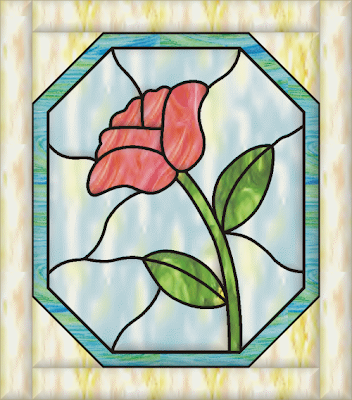Glass painting outline The piece of glass chosen for glass painting should have a smooth, plain and clear surface. Printed glass and designed surfaces should not be used, as the painting will not be prominent then. Since natural oils from the hands tend to smudge the glass surface, it is advisable to put on surgical or latex gloves while handling the glass piece.









